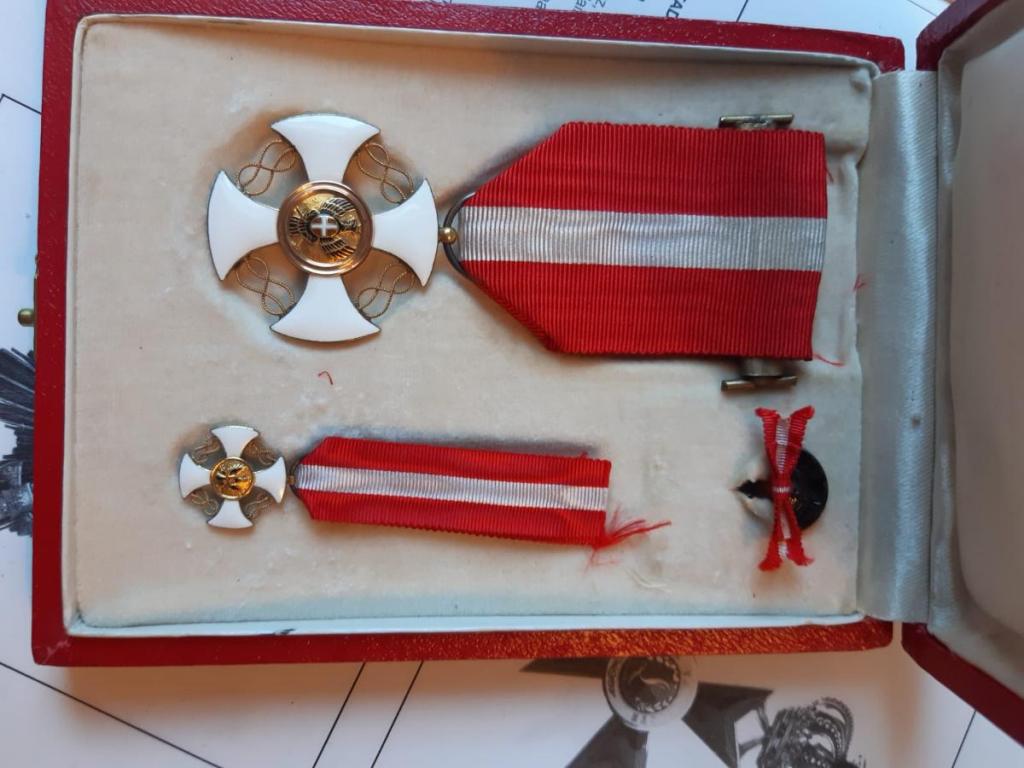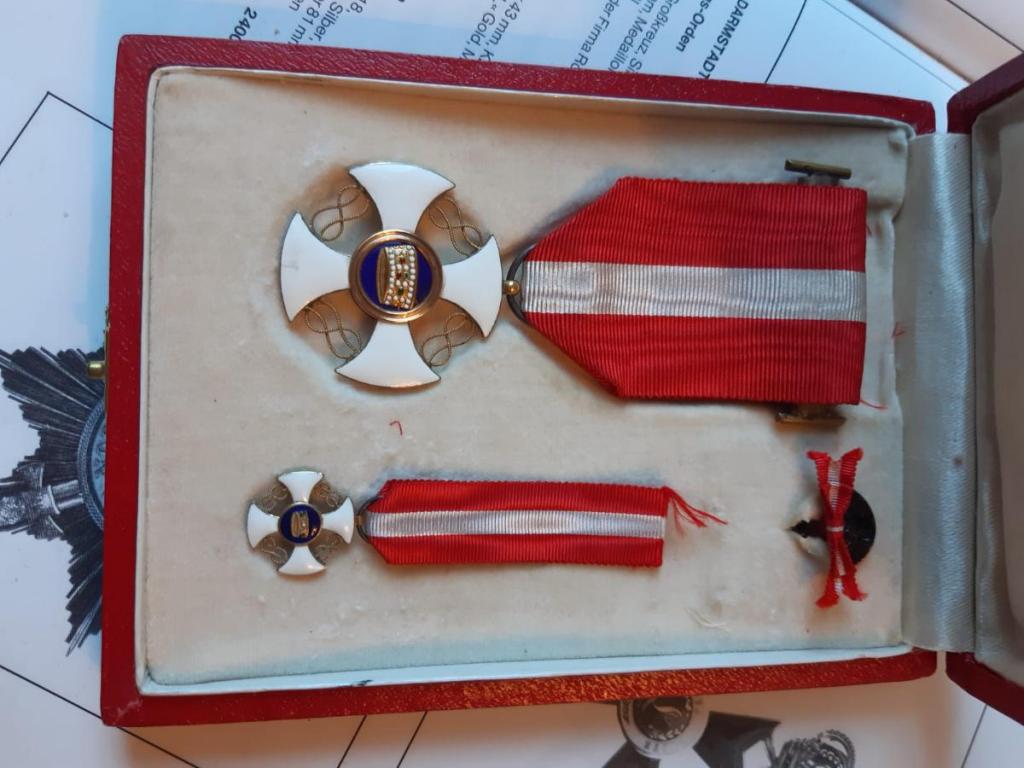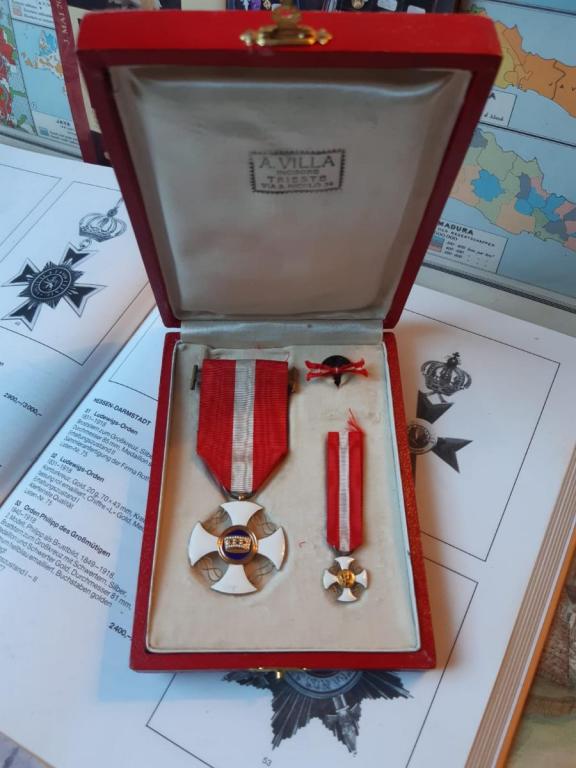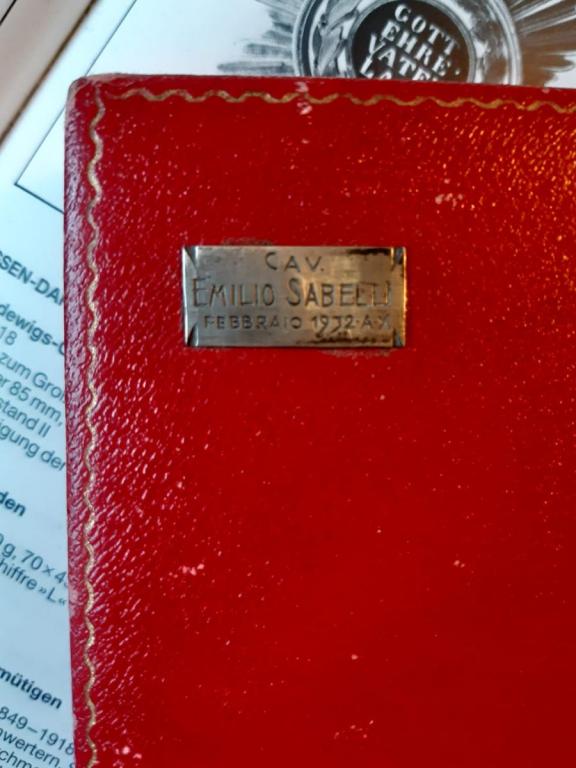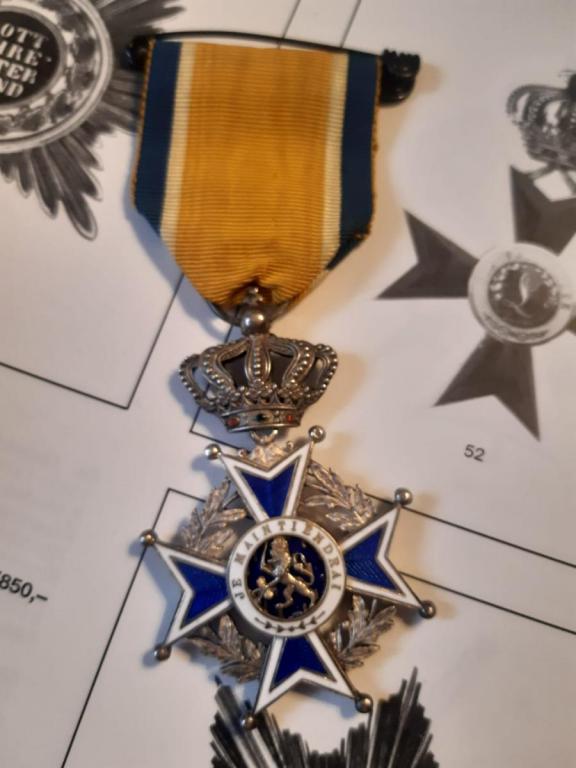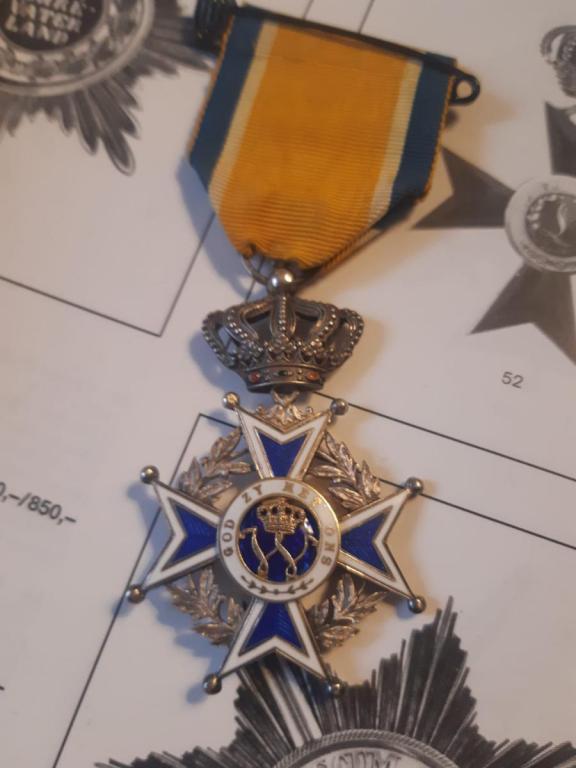-
Posts
674 -
Joined
-
Last visited
-
Days Won
6
Content Type
Profiles
Forums
Blogs
Gallery
Events
Store
Everything posted by laurentius
-
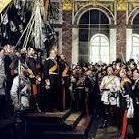
Order of the Italian Crown
laurentius replied to laurentius's topic in Southern European & Balkan States
Very nice Graf, pieces worth keeping -

Order of the Italian Crown
laurentius replied to laurentius's topic in Southern European & Balkan States
I still do, but sometimes the beauty of these non-German decorations pull me away from Germany. It was a permissible addition to my collection, given the many Germans who received this order between it's founding and the end of the Italian monarchy. In the end we collectors are like magpies, we are distracted by everything shiny. Kind regards, Laurentius -

Order of the Italian Crown
laurentius replied to laurentius's topic in Southern European & Balkan States
It is very light, almost like holding a feather. I compared it's weight to other decorations of similar size which weight much heavier. Thank you kindly for your response. Kind regards, Laurentius My (rather unprecise) kitchenscale gives 9 grams as the weight for my Order of the Italian Crown, whereas my Order of St. Gregory the Great (of roughly the same size, marked 'A' for silver) weighs 23 grams. -
Dear fellow collectors, I received this lovely Order of the Italian Crown today. It comes with a box, a miniature and a buttonhole-decoration. On the lid is a small metal plaque with the name of the recipient and the date of the award. His name was Emilio Sabelli and an Italian friend of mine told me he was civil engineer who worked in a shipyard. He was awarded the order in february of 1932 in the tenth year (A.X.) of Fascist Italy. Is there any more info on Emilio Sabelli? Did he receive more decorations during his career? I would also like to know from what kind of material the medal is made, since it isn't marked. Kind regards and thanks in advance, Laurentius
-
Dear fellow collectors, In the pinned House Order of Hohenzollern thread @Mattyboy was able to give another name to add to the list, being Lt Karl Plauth. Wikipedia credits him with 17 confirmed aerial victories. It also says he preferred his opponents to get out alive. I was wondering what his awards were, apart from the HoHx and the EK? Here is the link to the discussion in question: Kind regards and thanks in advance, Laurentius
-

1813 Iron Cross and St George Cross.
laurentius replied to Jim.L's topic in Germany: All Eras: The Iron Cross
If genuine the number will correspond to a soldier in the lists, so yes, that might be possible. I own a portrait of major Leber who had the same combination untill he received his DA. Kind regards, Laurentius -

Netherlands Dutch Medals and Medalbars
laurentius replied to Yankee's topic in Northern European & Baltic States
I have checked and there is no mark. The ribbon can't be removed (it's sown together with a small pin). The text on the back reads 'zy' and not 'zij' which was changed 1973 (if I'm not mistaken). Kind regards, Laurentius -

Netherlands Dutch Medals and Medalbars
laurentius replied to Yankee's topic in Northern European & Baltic States
Very nice, sadly (for me, not for you) yours is an Officer's cross whilst mine is a knight's cross. Yours also has a somewhat different lion and your wreath is a bit bushier. I appreciate the help. Kind regards, Laurentius -

Netherlands Dutch Medals and Medalbars
laurentius replied to Yankee's topic in Northern European & Baltic States
I received this beauty yesterday, it's the model from before the '70s. I was wondering if we could perhaps attribute it a maker and a more precise date of manufacture? I was thinking maybe made between the thirties and the fifties? It's a fine piece and the lion is almost as elaborately made as the lion on the Bavarian MVO4x I own. Kind regards, Laurentius -

Funny-looking Order of St. Gregory the Great
laurentius replied to laurentius's topic in Southern European & Balkan States
I do not have the piece in my possession, I did suspect a French connection, given the wreath which is double-sided and different from my piece made in Rome. Not to mention the ball-formed ringholder. Thank you very much for your response. Could we put a date on this decoration? Kind regards, Laurentius -
Dear fellow collectors, I came across this most peculiar Order of St. Gregory the Great today and it spiked my interest. My knowledge of Papal orders is still developing but several charasteristics of this cross give me a weird feeling. First there is the text on the medaillon which looks badly made (cast) to me, some letters are attached to the ring with residue still around their bases ( R, I, U in Gregorius) whereas the O of Gregorius is somewhat floating in the air? Not to mention the backside of the medaillon, where the text has a wholely different font and the centre seems to be painted, rather than enamel. The enamel on the cross in general and the details of the bust in the centre are also unrecognizable to me. Lastly the box seems generic, not really meant for this Papal decoration. What is your opinion? Kind regards, Laurentius
-
When you look at his medalbar you'll see plenty of German decorations, you are right though, since all other decorations seem to be foreign (with exception of some of the breaststars). Before 1914 there was almost an 'economy' of orders where each country had a number of jewellers who made decorations for their country. There are plenty of examples of officers (and sometimes soldiers and non-commissioned officers) who had more foreign than German awards. This tradition was aggravated by monarchs who themselves also had a nick for shiny orders and uniforms (just look at Wilhelm II or Czar Ferdinand of Bulgaria). This custom of cross-country decorating (which somewhat continues to this day) is one of the reasons I believe collectors should have a general knowledge of orders and decorations, apart from their own specialized niche. Kind regards, Laurentius
-

Papal Order of St. Gregory the Great
laurentius replied to laurentius's topic in Southern European & Balkan States
I looked at it and compared it to other gold pieces I have which have brought me to the conclusion that it is indeed silver-gilt. Kind regards, Laurentius -

Papal Order of St. Gregory the Great
laurentius replied to laurentius's topic in Southern European & Balkan States
Thank you very much 922F, your answer helped me greatly. I'll check the damage on the reverse medaillon in the morning. Thanks again, Laurentius


.thumb.jpeg.73ce8e54101a1620f848f8df901ea7f7.jpeg)
